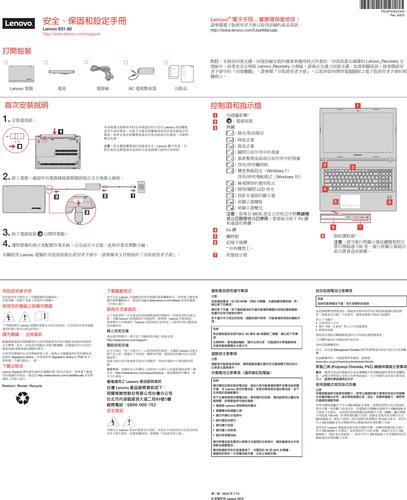Software Engineering Handbook: Best Practices and Guidelines
Software engineering is a complex field with a vast array of methodologies, tools, and practices. A solid understanding of software engineering principles is crucial for developing highquality software efficiently. This handbook provides an overview of best practices and guidelines in software engineering, covering various aspects from planning and design to testing and maintenance.
Table of Contents
1.
Introduction to Software Engineering
2.
Software Development Life Cycle (SDLC)
3.
Requirement Analysis and Specification
4.
Software Design Principles
5.
Programming Best Practices
6.
Testing Strategies
7.
Deployment and Maintenance
8.
Software Project Management
9.
Tools and Technologies
10.
Conclusion
1. Introduction to Software Engineering
Software engineering is the systematic application of engineering approaches to the development, operation, and maintenance of software. It encompasses a broad range of disciplines, including computer science, project management, and quality assurance. Key objectives of software engineering include:
Reliability
: Ensuring that software behaves as expected under different conditions.
Scalability
: Designing software that can handle increasing loads without significant performance degradation.
Maintainability
: Facilitating ease of maintenance and modification throughout the software lifecycle.
Security
: Protecting software and its data from unauthorized access and malicious attacks.2. Software Development Life Cycle (SDLC)
SDLC defines a methodology for building software systems. The typical stages of SDLC are:
Requirement Gathering
: Understanding and documenting customer needs.
Analysis
: Analyzing requirements to determine their feasibility and impact.
Design
: Creating a blueprint for the software solution.
Implementation
: Writing code based on the design specifications.
Testing
: Verifying that the software meets the requirements and functions correctly.
Deployment
: Installing the software in the production environment.
Maintenance
: Enhancing and fixing issues in the software over its lifecycle.3. Requirement Analysis and Specification
Clear and concise requirements are essential for successful software development. Key activities in requirement analysis include:
Stakeholder Communication
: Engage with stakeholders to understand their needs and expectations.
Requirement Elicitation
: Use various techniques like interviews, surveys, and workshops to gather requirements.
Requirement Documentation
: Document requirements in a structured manner using tools like use case diagrams, user stories, and requirement traceability matrices.4. Software Design Principles
Design principles guide the development of software architectures and components. Some important principles include:
Modularity
: Divide the software into independent and reusable modules.
Abstraction
: Hide unnecessary details and expose only relevant information.
Encapsulation
: Encapsulate related data and behavior into classes or modules.
Decoupling
: Minimize dependencies between different parts of the system.
SOLID Principles
: A set of five principles (Single Responsibility, Open/Closed, Liskov Substitution, Interface Segregation, Dependency Inversion) for writing maintainable and scalable code.5. Programming Best Practices
Writing clean and efficient code is essential for software maintainability and performance. Some best practices include:
Consistent Naming Conventions
: Use meaningful and consistent names for variables, functions, and classes.
Code Reusability
: Write reusable functions and modules to avoid duplication.
Error Handling
: Implement proper error handling mechanisms to handle exceptions gracefully.
Code Reviews
: Conduct regular code reviews to ensure code quality and consistency.
Version Control
: Use version control systems like Git to manage changes and collaborate with team members.6. Testing Strategies
Testing is a critical aspect of software development to ensure its quality and reliability. Some common testing strategies include:
Unit Testing
: Test individual components or units of code in isolation.
Integration Testing
: Test the interaction between different modules or components.
System Testing
: Verify that the entire system behaves as expected in a realworld environment.
Acceptance Testing
: Validate that the software meets the requirements specified by the stakeholders.
Regression Testing
: Rerun tests to ensure that new changes do not break existing functionality.7. Deployment and Maintenance
Deploying software into production and maintaining it require careful planning and execution. Some considerations include:
Deployment Automation
: Use tools like Docker and Kubernetes to automate the deployment process.
Monitoring and Logging
: Implement monitoring and logging mechanisms to track system health and diagnose issues.
Patch Management
: Regularly apply patches and updates to keep the software secure and uptodate.
Performance Optimization
: Identify and optimize performance bottlenecks to ensure optimal system performance.8. Software Project Management
Effective project management is essential for delivering software projects on time and within budget. Some project management techniques include:
Agile Methodologies
: Embrace Agile frameworks like Scrum or Kanban for iterative and incremental development.
Task Tracking
: Use project management tools like Jira or Trello to track tasks and monitor progress.
Risk Management
: Identify potential risks and develop mitigation strategies to address them.
Communication
: Foster clear and open communication within the team and with stakeholders.9. Tools and Technologies
Various tools and technologies are available to aid software development. Some popular ones include:
Integrated Development Environments (IDEs)
: Such as Visual Studio Code, IntelliJ IDEA, and Eclipse.
Version Control Systems
: Like Git, Subversion, and Mercurial.
Testing Frameworks
: Such as JUnit for Java, pytest for Python, and Jasmine for JavaScript.
Continuous Integration and Continuous Deployment (CI/CD)
: Tools like Jenkins, Travis CI, and GitLab CI.10. Conclusion
Software engineering is a dynamic field that continues to evolve with advancements in technology and methodologies. By following best practices and guidelines outlined in this handbook, software engineers can develop robust and reliable software systems that meet the needs of their users.
This handbook serves as a comprehensive guide for software engineers at all levels of experience. Whether you're a beginner looking to understand the fundamentals or an experienced developer seeking to refine your skills, these best practices and guidelines will help you in your software development journey.











